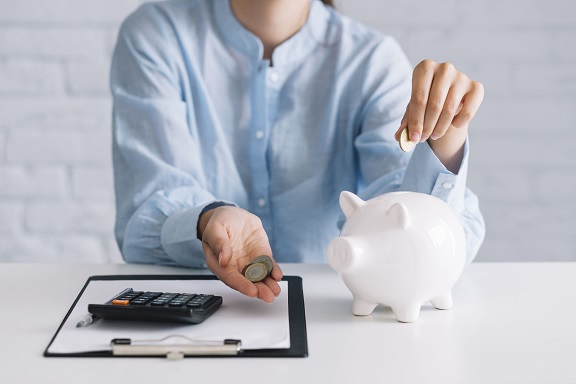The Commissioner of Taxation has been granted special leave to appeal against the Full Federal Court decision in FC of T v Bendel & Anor [2025] FCAFC 15.
AAT error confirmed
As I wrote in my earlier blog:
Has the AAT in Bendel reset the treatment of UPEs from trusts as Division 7A deemed dividends?
https://tinyurl.com/2dzya526
the AAT decision appealed to the Full Federal Court was no rigorous application of Division 7A of Part III of the Income Tax Assessment Act 1936 (Division 7A) to trust unpaid present entitlements (UPEs) of a beneficiary company to income from a family discretionary trust (FDT).
The Full Federal Court dismissed the Commissioner’s appeal:
In conclusion, whilst we are satisfied that the Tribunal did not complete its statutory task because it did not engage with the text of s 109D(3), we do not accept the Commissioner’s construction.
[2025] FCAFC 15 at para 90
and so found for the taxpayers for reasons largely different from those of the AAT albeit unanimously. Unlike the AAT, who very questionably found that the introduction of Subdivision EA to Division 7A somehow displayed that parliament did not intend sub-section 109D(3) to apply to UPEs, the Full Federal Court focused more specifically and properly on whether s109D was capable of that application.
Why was Subdivision EA, s109UB et al. introduced?
More likely was that the Commissioner and the Treasury were aware of the potential application of Commissioner of Taxation v. Radilo Enterprises Pty Ltd (1997) 72 FCR 300 and Prime Wheat Association Ltd v. Chief Commissioner of Stamp Duties (1997) 42 NSWLR 505 to stifle the application of sub-section 109D(3) to UPEs by the time section 109UB, the forerunner to Subdivisions EA and EB of Division 7A, was introduced in the Taxation Laws Amendment Act (No. 3) 1998. As it transpired these cases were applied by the Full Federal Court in Bendel to deny the reach of Division 7A towards UPEs. Rather all of section 109D, section 109UB and Subdivisions EA and EB reveal a parliamentary impetus to bring UPEs within the range of disguised dividends to which Division 7A applies. Given that the implicit finding to the contrary by the AAT in Bendel appealed to the Full Federal Court is scarcely believable.
Arcane drafting
The Full Federal Court focussed more on the drafting of section 109D itself. Their focus did reveal inadequate drafting of the extended loan provisions in sub-section 109D(3). However the court’s statutory interpretation of section 109D, which bases their decision, has rendered sub-section 109D(3), a sub-section the Commissioner used to ground the public ruling TR 2010/3 for around fifteen years, virtually meaningless and ineffective. I understand the effect of the Full Federal Court decision, now under appeal to the High Court, to be that a UPE, or any other interaction where a private company is a creditor, can only be an extended loan under sub-section 109D(3) where it is a loan capable of repayment in the first place. That is, there is to be no extension of what a loan is by sub-section 109D(3) which will make a transaction that is not a loan into a loan. It follows that the sub-section on that reckoning has no work to do.
The Full Federal Court particularly focused on paragraph 109D(1)(b) which expressly refers to the loan not being fully repaid before the lodgment day for the current year. From that the court effectively deduced that a transaction that was never paid or advanced to a debtor can’t be repaid by the debtor and thus cannot have been a loan to the debtor.
But should sub-section 109D(3) have been neutered?
Maybe that unsuccessful marry up of something that was never paid or advanced into something that can be repaid under sub-section 109D(3) is enough to require the sub-section should be neutered. It is indeed invidious that the legislature has expressed its intent to tax trust UPEs in all of its legislative efforts initiated by the Treasury and the Commissioner of Taxation (Commissioner) to date so unclearly. But is the drafting of sub-section 109D(3) in particular so awry that the sub-section should never transform transactions, that are not in themselves loans, into loans within the extended sub-section 109D(3) definition?
Rationally a debt could extend to a loan under sub-section 109D(3) where the debt had the attributes of a loan under which advance of the loaned funds can be inferred. Sub-section 109D(4) establishes that a loan is made to an entity at the time either when:
- the amount of the loan is paid to the entity by way of loan; or (emphasis added)
- anything described in sub-section 109D(3) is done in relation to the entity.
It follows that the making of an extended loan within sub-section 109D(3) criteria should be construed as a payment or at least as something that can repaid. Without specifically saying so the transaction that “is done in relation to the entity” should be taken to give rise to a loan capable of “repayment” where the transaction manifests a loan under extension by sub-section 109D(3). Just as a repayment where there was no payment makes no sense, a loan can’t exist without something that stands as the making of the loan which the second limb of sub-section 109D(4) tries to capture as the timing of the loan and, dare I say, tries to treat as a payment or an advance of a loan or its equivalent that can be “repaid”.
Towards a more purposive construction
A more purposive construction would allow sub-section 109D(3) to work to capture disguised private company dividends. Certainly the Full Federal Court itself didn’t see that its finding reflected a Cooper Brookes type absurd or irrational construction of sub-section 109D(3). At paragraphs 87 and 88 the Full Federal Court observed:
87. We note that the construction we have adopted does not give rise to absurd or irrational outcomes or leave unaddressed an obvious drafting error: cf Cooper Brookes (Wollongong) Pty Ltd v Commissioner of Taxation [1981] HCA 26; 147 CLR 297 at 305 (Gibbs CJ), 311 (Stephen J) and 320–321 (Mason and Wilson JJ). The primary division governing the taxation of the income of a trust is Div 6 of the 1936 Act. Under that division, a beneficiary is taxed on its share of the net income of the trust estate based on their present entitlement to a share of the income. As explained above, if there is a share of the income of the trust estate to which no beneficiary is presently entitled, that share of the net income of the trust is taxed in the hands of the trustee at the highest marginal rate.
88. The perceived mischief which lies at the heart of the Commissioner’s submission is the creation of a present entitlement which is not paid to a corporate beneficiary and remains in the trust but which benefits from taxation at the corporate beneficiary’s corporate tax rate. Division 7A does not operate to negate that present entitlement. A consequence of the Commissioner’s construction of Div 7A is that a share of net income to which a corporate beneficiary has been made presently entitled and on which the corporate beneficiary has been taxed in one year is again included net income of that same trust in the following year. This has the potential result of an overall tax impost that is higher than if the corporate beneficiary was never made presently entitled at all.
[2025] FCAFC 15 at paras 87-88
It seems to me that conclusion in paragraph 88, which was also reached by the AAT, arose from a contention of the taxpayers neither the AAT of the Full Federal Court successfully grappled with. Both seem to be saying that it does not matter sub-section 109D(3) doesn’t work because there is no proper taxing for the sub-section to do anyway given how Division 6 of Part III applies to tax a UPE. The double tax contention asserted in paragraph 88 fails to reflect, and does not reveal, that two separate and chronologically distinct transactions happened with regard to the UPEs in Bendel which ordinarily and legitimately have their own separate tax consequences. Firstly:
the distribution giving rise to the present entitlement taxable to the company beneficiary, Gleewin Investments, under sub-section 97(1) of the ITAA 1936;
and secondly:
the disguised dividend when the entitlement, following distribution to the company, is left by the company to the trustee of the trust from which the entitlement came in the same manner as the trustee has loan funds under a loan made by Gleewin Investments beneficiary to the trustee of the FDT.
It is incontrovertible that the policy of the ITAA 1936 is to tax both.
UPEs with the features of loans
In Taxation Ruling TR 2010/3 Income tax: Division 7A loans: trust entitlements the Commissioner demonstrated how readily trust UPEs can come to have most features of a loan including:
- a debt owing to the company presently entitled to the funds; and
- a use of funds, that could have otherwise discharged the UPE, by the trustee owing the UPE for the purposes of and to the benefit of the trustee and not for the purposes of and to the benefit of the company beneficiary owed the UPE.
How case precedent applied to the structure of sub-section 109D(3)
But the Commissioners published rulings, being the views of just one litigant, are not as persuasive before a court as case authorities. The authorities the Full Federal Court decision favoured construed provisions extending what a loan is for the purpose of the relevant legislation narrowly.
The extended loan formulation of loan in sub-section 109D(3) of Division 7A provides:
(3) In this Division, loan includes:
(a) an advance of money; and
(b) a provision of credit or any other form of financial accommodation; and
(c) a payment of an amount for, on account of, on behalf of or at the request of, an entity, if there is an express or implied obligation to repay the amount; and
(d) a transaction (whatever its terms or form) which in substance effects a loan of money.
sub-section 109D(3) of the ITAA 1936
Prime Wheat also involved extension of a definition of loan by a taxing statute: the Stamp Duties Act 1920. The definition in sub-section 83(1) of that Act was:
`Loan’ includes:-
(a) an advance of money; and
(b) money paid for or on account of or on behalf of or at the request of any person; and
(c) a forbearance to require payment of money owing on any account whatever; and
(d) any transaction (whatever its terms or form) which in substance effects a loan of money.
sub-section 83(1) of Duties Act (NSW) 1920
Gleeson CJ of the Court of Appeal of NSW, later Gleeson CJ of the High Court, essentially found that each of the inclusions in what is a loan in paragraphs (a), (b) and (d) are situations where the borrower can repay the advance, money paid or in substance loan. Gleeson CJ also found:
- the paragraph 83(1)(d) of the Stamp Duties Act definition concerning in-substance loans should not be construed so widely so as to render everything else in the definition in sub-section 83(1) otiose; and
- not all forms of financial accommodation should be treated as loans;
by taking a restrictive view of what could be an in-substance loan under paragraph 83(1)(d). The Stamp Duties Act (NSW) 1920 regime was directed to duty on documents, not transactions, albeit, at that time, the NSW parliament was on the verge of enacting the Duties Act (NSW) 1997 so as to invert that approach.
So, in the context of duties on documents under the former Stamp Duties Act 1920 regime one can follow why the Court of Appeal would be reluctant to find a document was transactionally comparable to a loan in substance when the document does not have provisions which give rise to the features of a loan in fact.
Tax on documents vs. Tax on the substance of transactions
But this context of focus on the document is not present in Division 7A which is plainly directed to the capture of disguised private company dividends to shareholders of private companies and their associates. The document or documents by which a disguised dividend is implemented is not a key to section 109D and, moreover, a document itself can be the disguise, or a part of it, of a disguised private company dividend. It is fair to say that an in-substance loan is a transaction Division 7A is directed to by the legislature in paragraph 109D(3)(d) to address a loan transaction no matter how it is documented or whatever its terms or form.
Is the Prime Wheat approach contextually appropriate for Division 7A?
That is, as a matter of context, there is a great difference in what Gleeson CJ was seeking to prevent viz. an overly wide and uncertain range of documents with borderline extended loans being possibly or possibly not subjected to NSW stamp duty and the closing of the UPE disguised dividend loophole under section 109D which the extended formulation of loan in sub-section 109D(3) of the ITAA 1936 was intended by parliament to achieve.
But despite that the Full Federal Court wholly adopted Gleeson CJ’s reasoning in Prime Wheat.
And what of difference to sub-section 109D(3) in paragraph 83(1)(c) – a forbearance to require payment of money owing in the definition of loan? Gleeson CJ found there was no forbearance in Prime Wheat on the facts. There was agreement as to when the purchase price of shares was to be paid and the vendor did not forbear anything. The vendor in Prime Wheat had simply observed the contract. Gleeson CJ stated:
The essence of a loan is an obligation of repayment. Here what was involved on the part of the purchasers was payment, not repayment.
Prime Wheat at 512
only in the context of an in substance loan under paragraph 83(1)(d). Gleeson CJ did not observe in dicta that a forbearance in relation to a debt, that could only be paid and not repaid, could not be loan under the paragraph 83(1)(c) inclusion in the definition of loan.
How the Full Federal Court came to adopt the Prime Wheat approach to extending a loan
At paragraph 70 in Bendel, the Full Federal Court observed of paragraphs 109D(3)(a), (c) and (d):
Each of s 109D(3)(a), (c) and (d) encapsulate a concept of repayment. As the Court of Appeal observed in Prime Wheat at 512 (Gleeson CJ), an advance of money involves the making of a loan, where the concept of a loan involves the provision of a principal sum attendant with an obligation to repay. Thus, embedded in s 109D(3)(a) is an obligation to repay. By its terms, s 109D(3)(c) is engaged only if there is an express or implied obligation to repay. Section 109D(3)(d) refers to a transaction which in substance effects a loan of money. It should not be accorded a meaning that renders all other subparagraphs otiose: Prime Wheat at 512. A transaction effects a loan of money where it in substance effects an obligation to repay an identifiable sum: Radilo at 313 (Sackville and Lehane JJ); Prime Wheat at 512. It would be consistent with the context of s 109D(3) for s 109D(3)(b) to also be read as encapsulating a concept of repayment.
[2025] FCAFC 15 at para 70
The forbearance inclusion vs. the credit/financial accommodation extended loan inclusion
Instead of paragraph 83(1)(c), which had a forbearance to require payment of money owing in the Stamp Duties Act definition which was in issue in Prime Wheat, the extended definition of loan in sub-section 109D(3) of Division 7A has this inclusion in paragraph 109D(3)(b): a provision of credit or any other form of financial accommodation. In effect the Full Federal Court found that paragraph 109D(3)(b) too, had to encapsulate a concept of repayment in the context of section 109D(3). At paragraphs 74 to 79 the Full Federal Court observed:
74. Whilst s 109D(3) provides an inclusive definition of the word “loan”, there is no section which expands the meaning of the word “repaid”. This further suggests that the reference to the making of a “loan” in s 109D(1)(a) involves the creation by the private company of an obligation to repay, where s 109D(1)(b) is satisfied if that obligation to repay remains unfulfilled before the lodgment date. By reading “loan” as defined in each of s 109D(3)(a)–(d) as containing an obligation to repay, s 109D(1)(a) can be read harmoniously with the reference to “not fully repaid” in s 109D(1)(b).
75. Section 109D is part of Div 7A, which treats certain kinds of amounts as dividends paid by a private company. Section 109B, in giving a simplified outline of Div 7A, identifies three kinds of amounts as being treated as dividends paid by a private company:
(a) amounts paid by the company to a shareholder or shareholder’s associate;
(b) amounts lent by the company to a shareholder or shareholder’s associate;
(c) amounts of debts owed by a shareholder or shareholder’s associate.
76. This context is not consistent with ascribing to the term “provision of credit or any other form of financial accommodation” in s 109D(3)(b) a meaning as broad as that attributed to that phrase in the Corporations Act. In a context in which the purpose of the definition is to identify transactions to be treated as the payment of a dividend, a provision of financial accommodation is not to be construed as extending to the provision of a guarantee that may in fact never be called upon and never result in a payment by the company under the guarantee to any person as a loan. (There is a specific provision in Div 7A dealing with payments made under guarantees: s 109UA.) The same might also be said of the establishment of a credit facility that is undrawn. As the High Court held in International Litigation Partners, each of those may constitute the provision of financial accommodation in a context where what is sought to be achieved is the regulation of activities in a corporate law context. The same meaning does not translate to the context of Div 7A.
77. Division 7A itself draws a distinction between a “debt” and a “loan”. Section 109F(1) deems a private company to have paid a dividend to an entity if all or part of a debt owed by the entity to the private company is forgiven in that year. The term used is “debt” not “loan”. Section 109G provides for circumstances in which a company is taken not to pay a dividend because a debt owed to the company is forgiven. One such circumstance is where there is a:
forgiveness of an amount of a debt resulting from a loan if, because of the loan, the private company is taken:
(a) under section 109D to pay a dividend at the end of that year or an earlier one …
78. It is apparent from the terms of s 109G that the concept of a “debt” is not to be equated with a loan and that the concept of a loan is narrower than that of a debt. It is only a type of debt – being a debt resulting from a loan – that may be eligible for exclusion. That Div 7A does not equate all forms of debtor-creditor relationships with “loans” further suggests that the term “provision of credit or any other form of financial accommodation” in s 109D(3)(b) is not to be construed as extending to any form of debtor-creditor relationship.
79. Having regard to its context, s 109D(3)(b) is to be construed as referring to a provision of credit or any other form of financial accommodation which involves an obligation to repay an identifiable principal sum, rather than simply an obligation to pay. The creation of an obligation to pay an amount to a private company that does not result from a transfer of an amount from or at the direction of the private company is not a loan within the meaning of s 109D(3). This is consistent with the use of the phrase “makes a loan” in s 109D(1)(a) which connotes something more than the mere existence of a debt owed to a private company.
2025] FCAFC 15 at paras 74-79
As the court observes in paragraph 76, it is problematic that a provision of a guarantee or an undrawn credit facility, which does not even give rise to a debt, could be an extended loan caught by Division 7A unless paragraph 109D(3)(b) is accorded contextual restraint.
Why should an advance or payment be required for an extended loan?
But is it also right to impose the same contextual restraint viz. requiring an advance or a payment that creates an obligation to repay before any of paragraphs 109D(3)(a), (b), (c) and (d) apply when paragraphs 109D(3)(a) and (c) only are clearly predicated on an advance or payment that gives rise to an obligation to repay.
The idea of repay can make more sense when the provision of credit or financial accommodation can be viewed as the equivalent of a loan advance that does entrench a debt to be repaid. Division 7A and the amendments to it rather use concepts of debt, loan and guarantee indiscriminately which do make it difficult to pinpoint the true scope of paragraph 109D(3)(b).
The Full Federal Court fairly observe paragraph 109D(3)(b) should not, depending on how the words “provision” and “accommodation” are construed, extend to guarantees and undrawn loan facilities where nothing provided or accommodated has given rise to a debt and are thus situations clearly distinguishable from a loan where a lender is indebted.
But shouldn’t provisions of credit and financial accommodations which do give rise to, or entrench a debt, come within paragraph 109D(3)(b)? Aren’t these provisions or accommodations of economic substance when a debt persists or follows?
The conflation of paragraph 109D(3)(d) or at least the use of 109D(3)(a) to build the context of the sub-section, rather than of 109D(3)(a) and (c) to 109D(3)(b), better accords with what appears to be the intent of the whole sub-section in my view. Neither a guarantee nor an unused line of credit gives rise to an in-substance loan but the provision of credit by way of a UPEs unclaimed by the company beneficiary in Bendel do on some level. If one must accept that Prime Wheat applies to section 109D(3), if it is aptly applied in the section 109D context. paragraph 109D(3)(d) is otiose and thus should not be used to separately ground what is not an extended loan under the other three paragraphs of sub-section 109D(3). But paragraph 109D(3)(d) is still some insight showing parliamentary zeal to widen what is a loan to close a loophole and, I suggest, should inform how paragraph 109D(3)(b), or paragraphs 109D(3)(b) and (d) together, should be applied to a UPE.
Paragraphs 109D(3)(d) would only do so insofar as a “loan of money” is effected which would not capture a guarantee or a line of credit potentially within one view of paragraph 109D(3)(b) alone. For instance an in-substance loan to which paragraph 109D(3) applies could be a loan that can be counted in money giving the debtor a provision of credit even if such a loan does not arise through the advance or payment of money to the debtor. A good example may be trader with trading terms such as:
all credit for sales must be repaid with interest at 8% p.a. compounding weekly
In such a case could a trade debtor of the trader, despite the imprecise wording of these terms, fairly say:
Oh! You sold me goods. I have nothing to repay! Therefore these trading terms don’t apply to me.
?
Isn’t the point that the debtor comes to owe a debt which is the commercial equivalent of a loan of money and not how that debt came about? How the debt came about is not much more than a historical matter and is not a key feature of a loan. Loans can be refinanced and it barely matters whether the financing or the refinancing is to be considered the origin of he loan. Can’t the word repay, though imprecise and emblematic of sub-standard drafting, be fairly understood in this context especially in view of sub-section 109D(4)? How a debt came about is somewhat irrelevant to the obligation of the debtor to pay, or repay, outstanding loan principal back.
Reminiscent of the Curran debacle
Bendel reminds me of the approach of the majority of the High Court in Curran v Federal Commissioner of Taxation (1974) HCA 46 where the court reasoned that bonus shares, though issued without any actual outlay, could be treated as if they had a cost (their par value), enabling a partner in a partnership to claim deductions for their par value where the bonus shares were trading stock of the partnership and by that generate artificial tax losses. A later High Court in John v Federal Commissioner of Taxation [1989] HCA 5 eventually overturned Curran and corrected the error of focus on the bonus issue of shares at a par value, an economic triviality just like the payment of a loan is in contrast to the recognition of debt, by justifiably moving the focus to the absence of economic value in the bonus shares separate to the value of original shares from which the bonus shares issued. And so the court in John confirmed there was no economic value in the bonus shares justifying their inclusion in trading stock.
Like comparing a trading debt to a loan made by advance where the two are not economically different and it is not or should not consequential that the latter can be repaid and the the former can’t be repaid.
The word repay is surely wrongly used in section 109D. I can only agree with the Full Federal Court on that. But is that reason to make the distinction between a debt, which an unpaid present entitlement is, based on the reasoning in Fischer v. Nemeske Pty. Ltd. [2016] HCA 11, and a loan, as the Full Federal Court does in paragraphs 76 to 90 of its decision in Bendel?
The piecemeal drafting of Division 7A and the amendments to address perceived deficiencies in the treatment of UPEs in particular do not connote a coherent context particularly to understand what is meant by repay in the Division, rather the opposite.
A final word on provision of credit or other form of financial accommodation
It appears that the Full Federal Court rejected that the provision of credit or other form of financial accommodation by Gleewin Investments, itself identified by the Commissioner of Taxation in paragraphs 20 to 23 of his original ruling Taxation Ruling TR 2010/3 Income tax: Division 7A loans: trust entitlements in these terms:
19. A private company beneficiary provides financial accommodation to the trustee of a trust in respect of which it has a UPE if, under a consensual agreement:
• the private company supplies or grants some form of pecuniary aid or favour to the trust; and
• a principal sum or equivalent is ultimately payable to the private company.
20. As the amount of the UPE is a principal sum ultimately payable to the private company beneficiary, the private company provides financial accommodation to the trustee of a trust for the purposes of the extended meaning of a loan in subsection 109D(3) if it provides any pecuniary aid or favour to the trustee of that trust under a consensual agreement.
21. A consensual agreement for the provision of pecuniary aid or favour to the trustee of a trust arises if a private company beneficiary authorises (including by acquiescing with knowledge of) the trustee’s continued use for trust purposes of the funds representing the private company’s UPE by not calling for:
• the payment of that UPE; or
• the investment of the funds representing the UPE for the private company’s sole benefit rather than their use for the benefit of the trust.
22. In these circumstances the private company provides pecuniary support to the trustee equal to the whole amount of the UPE that the private company beneficiary has allowed the trustee to use (including by knowledgeably acquiescing to this use) for trust purposes.
23. Accordingly, if a private company beneficiary has knowledge that funds representing its UPE are being used by the trustee for trust purposes (rather than being held and / or used for that private company’s sole benefit), in not calling for payment of its UPE the private company provides the trustee with financial accommodation and, by extension, makes a Division 7A loan to the trustee.
TR 2010/3 at paras 19-23
could be a provision of credit or other form of financial accommodation caught by sub-section 109D(3)(b). Maybe inability to technically repay what may be a loan made by such covert method described in TR 2010/3 does not stand well as reasoning to reject that a loan in economic substance has arisen on the bases the Commissioner has considered in the ruling and contended to the Full Federal Court in Bendel.










